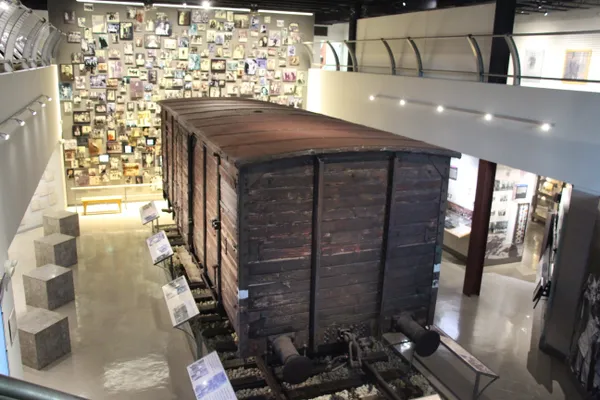
The Florida Holocaust Museum
55 5th St. S., St. Petersburg, FL 33701 - United States
Located in downtown St. Petersburg, Florida, The Florida Holocaust Museum (The FHM) is recognized as one of the largest and most comprehensive Holocaust museums in the United States and a significant resource for Holocaust study and genocide history. The FHM is one of only three Holocaust museums in the nation to be accredited by the American Alliance of Museums and it provides quality Holocaust and human rights education to adults and students. The FHM uses the 20,000 objects in its permanent collection to give voice to the individual stories of those who suffered and died during the Holocaust. The Florida Holocaust Museum is home to one of the few remaining railroad boxcars of the type used by the Nazis to transport Jews and other prisoners to places like Auschwitz and Treblinka. Boxcar #113 069-5 now rests on original tracks from the Treblinka Killing Center as a silent tribute to those who perished in the Holocaust.
Exhibits
The Museum’s core exhibition, History, Heritage and Hope spans the first floor. Featuring original artifacts, and photos, it presents the history of the Holocaust beginning with the history of antisemitism and life before World War II, followed by the rise of Hitler and the Nazis and anti-Jewish legislation. The history of other victim groups, ghettoes and rescue are shown. It also houses the permanent exhibition, Kaddish in Wood: Woodcarvings by Dr. Herbert Savel. These carvings are of French children who were victims of the Holocaust.
Special Exhibitions:
Her Response: Women Artists from the FHM Permanent Collection features art created in response to the Holocaust collected by the Museum over the last thirty years. The exhibition is intended to serve as a dialogue exploring the many subjects within the Holocaust like political injustice, rooted identity, ambiguity, memory, time and therapy and examines how gender may play a role in art and art as testimony.
Jehovah’s Witnesses: Faith Under Fire: Jehovah’s Witnesses, a Christian community of 35,000 in Germany and occupied lands, refused to conform to the Nazi ideology of hate. They suffered severely for their belief in nonviolence and their utter rejection of racism. Thrown into Nazi camps, they became eyewitnesses of Nazi genocide. This exhibition documents the story of Jehovah’s Witnesses in the Holocaust and provides an in depth look at ordinary people who followed their conscience in the face of tyranny.
Stitching History from the Holocaust: In the winter of 1939, Paul Strnad wrote his cousin Alvin in Milwaukee, Wisconsin. Desperate to obtain an affidavit to escape the onslaught of Nazi Germany, Paul sent Alvin sketches of his wife Hedwig’s designs. Paul and Hedy hoped that these examples of her work would provide evidence of their financial independence. Despite Alvin’s best efforts, both Hedwig and her husband Paul were murdered in the Holocaust. All that remains of the story are this letter and Hedwig’s sketches.
Stitching History from the Holocaust explores the life and work of Hedy Strnad before her murder. The main feature of this exhibit is the recreation of Hedy’s dresses from her sketches. It serves as an example of what happens when human suffering is ignored and is a testament to the incalculable loss of the Holocaust.
Participation in Museum Day is open to any tax-exempt or governmental museum or cultural venue on a voluntary basis. Smithsonian magazine encourages museum visitation, but is not responsible for and does not endorse the content of the participating museums and cultural venues, and does not subsidize museums that participate.

